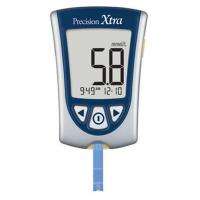
Artificial Pancreas for People with Diabetes - Everything You Need to Know!Artificial Pancreas for People with Diabetes - Everything You Need to Know!
  © Nataliia Mysik | Dreamstime.com According to new studies, an artificial pancreas can help patients with type II diabetes keep their blood sugar levels in control. If you have diabetes and don't manage it well, blood sugar level spikes can increase the risk of complications and lengthen hospital stays. An artificial pancreas is a type of futuristic technology commonly referred to as an automated insulin delivery system (AID). The technology has been improved over the last few years and is very close to becoming a game-changer for people whose lives depend on getting their insulin on time. What is an artificial pancreas? Even though the name sounds like an appliance that's installed in your body, this is not actually the case. An artificial pancreas is an insulin pump that is connected to a continuous glucose monitor. Patients can control and monitor via a receiver, which is now a separate device, but it would be a mobile app in the future. The purpose of an artificial pancreas is to automate blood sugar levels control as much as possible, so the patient doesn't have to take regular fingerstick readings and calculate how much insulin to use based on those readings. There are various artificial pancreas systems at different points in development, ranging from clinical studies to early commercial products. The good news is that incredible developments are being made, and new companies have become interested in the advancement of diabetes management.
What are the main types of artificial pancreases? There are three main types of artificial pancreas technologies being developed: closed-loop artificial pancreas, implanted artificial pancreas, and bionic pancreas. Closed-loop artificial pancreas This type of artificial pancreas is the most extensively tested technology to date. Cambridge University has pioneered the most advanced technology, and their closed-loop system is presently being tested on humans in both home and controlled conditions. A closed-loop artificial pancreas consists of an external insulin pump that communicates to a CGM the patient wears on the skin in the form of a patch. These CGM measures glucose levels constantly and feeds the result into a tiny computer that calculates how much insulin has to be transported to the pump. The cycle is complete when the dose of insulin is delivered into the patient's body as needed. Implanted artificial pancreas As its name suggests, an implantable artificial pancreas would be implanted in the body of the patient to deliver the right those of insulin as needed. This type of device is being developed by researchers from De Montfort University, and it works with the help of a gel that reacts to changes in blood sugar levels. The gel can enable a higher rate of insulin when blood sugar levels are elevated and decrease it during lower sugar levels.
Bionic pancreas In 2015, a bionic pancreas developed by Beta Bionics was introduced to the world. The iLet is a device that can help people with type I diabetes manage their condition just with the help of the device. The pancreas controls blood glucose levels automatically and comprises of two pumps that deliver the exact amount of insulin. The pump connects to the device via Bluetooth, and users can see that required doses with the help of an iPhone app. The device makes automated dosing decisions about insulin and glucagon every five minutes based on CGM readings.
What are the benefits of an artificial pancreas? While an artificial pancreas's main purpose is to automate insulin dosage for people who live with diabetes, another important benefit is to prevent hypoglycemic events that can have catastrophic consequences. This is especially important for young children who have diabetes but can't recognize the symptoms of a hypoglycaemic event. Studies have shown that artificial pancreas is benefited even well-controlled diabetes. The devices were tested in adults who have actively been engaged with self-management of their diabetes and the results were positive. Patients with poorly controlled diabetes can benefit most from an artificial pancreas, but the result is still needed to determine how these devices perform in the conditions of variable definitions of poor glycemic control. The FDA approved the first artificial pancreas for people with type I diabetes in September 2016. The device is called the MiniMed 670G and is suitable for people who are 14 and older. While this is not a fully automatic pancreas, it's considered to be a hybrid system because you still need to manually enter the amount of carbohydrates you will be done in order for the system to be able to adjust your dose of insulin. If you're wondering whether you can get an artificial pancreas to help you manage your diabetes, the answer is you might have to wait for a while. While multiple systems are being tested and home and clinical trials have been completed, research is still being conducted before releasing the devices for mass usage.
| |||||||||||||||||||||||||




























